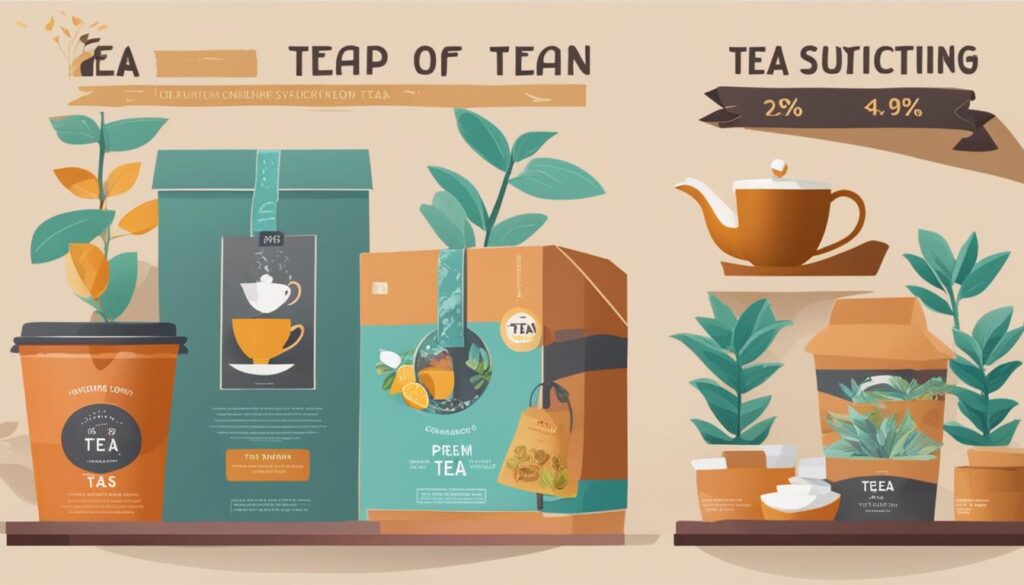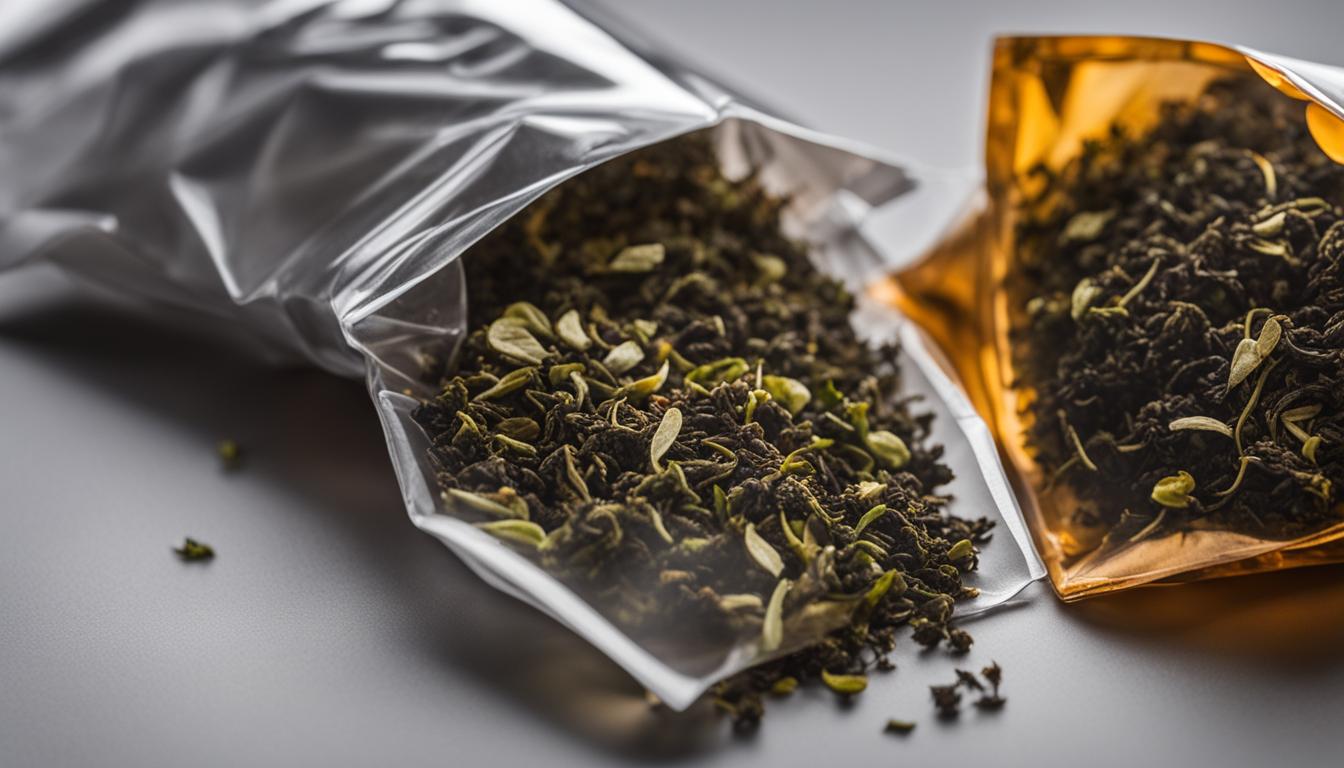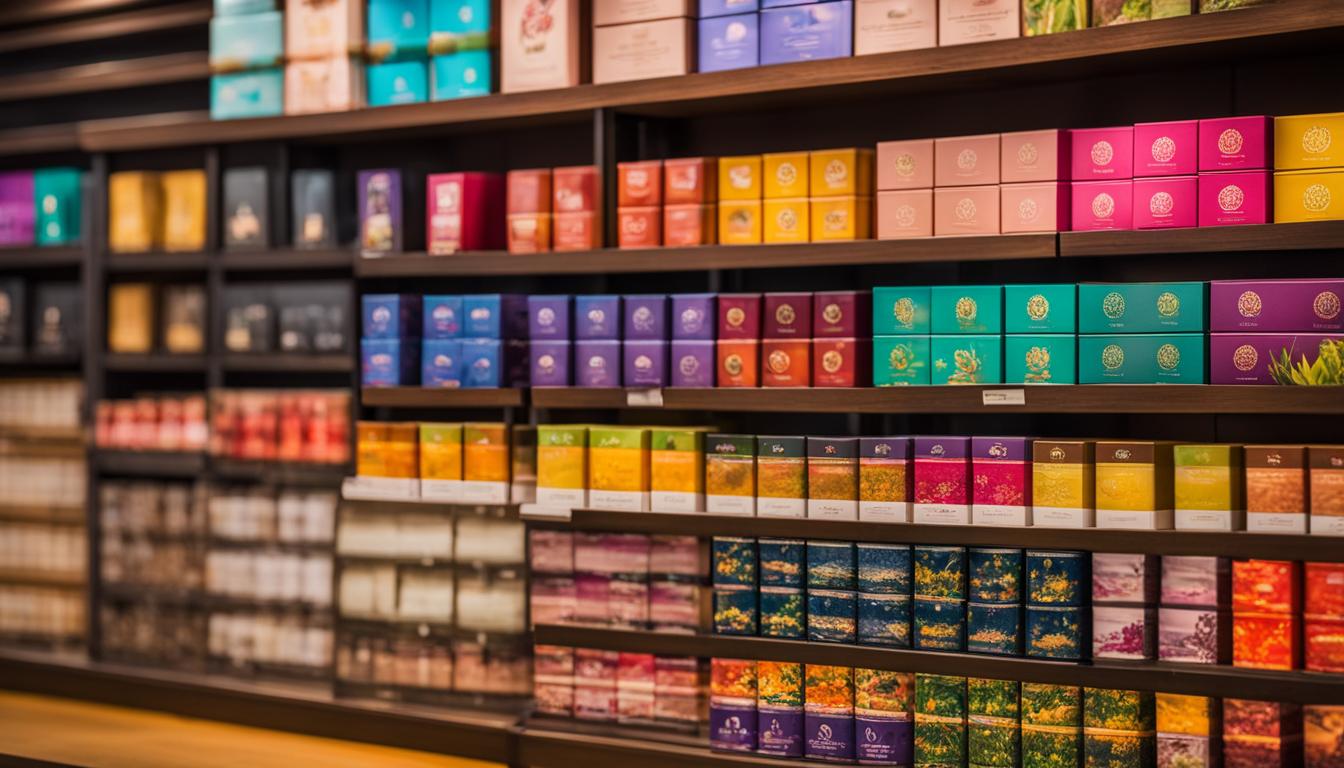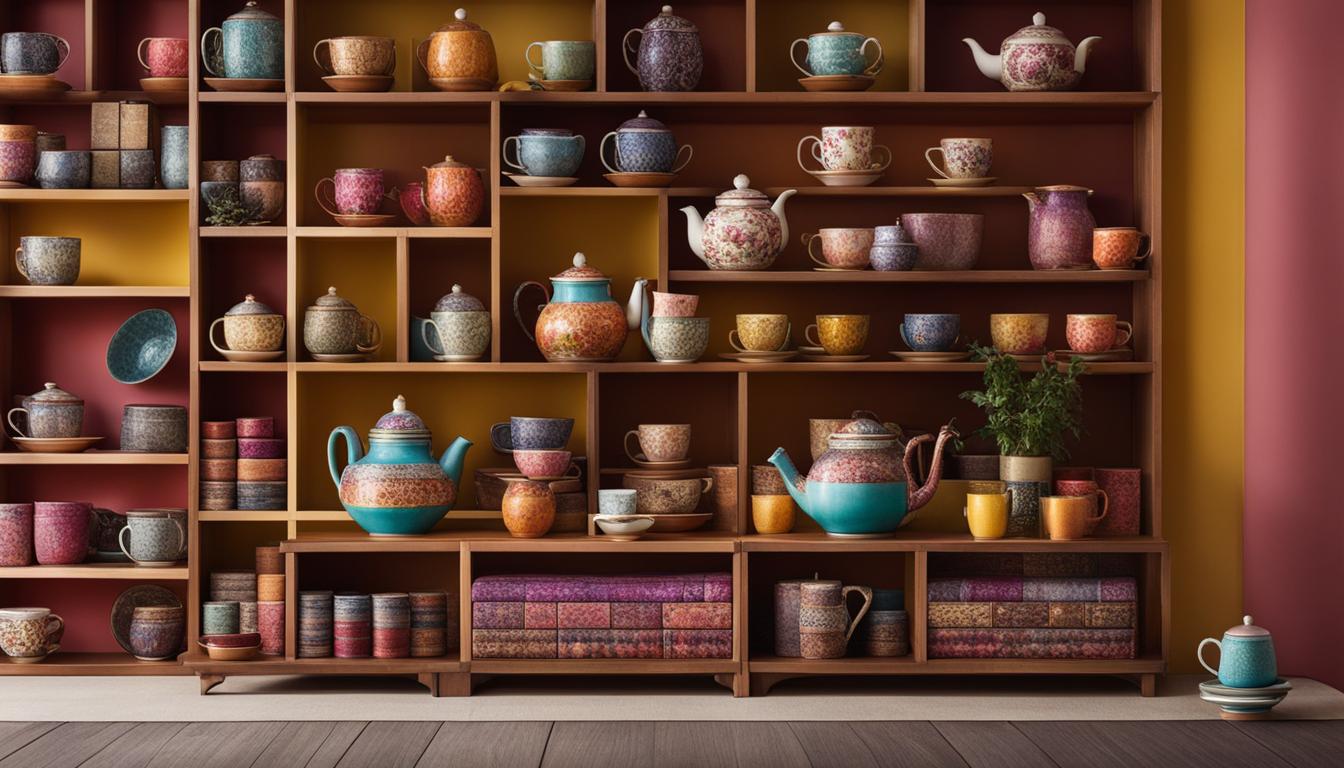As the global tea market continues to experience rapid growth, it is essential for tea subscription businesses to stay ahead of evolving retail trends. From the future of retail in tea subscriptions to the necessary adaptation of retail models and digital transformation, understanding the impact of these trends is crucial for success in the industry.
Key Takeaways:
- Evolving Tea Subscription Trends play a significant role in the future of retail in the tea industry.
- Retail model adaptation and digital transformation are essential for tea subscription businesses.
- Understanding retail trends and their impact on tea subscriptions is crucial for staying competitive in the market.
- Adapting to changing consumer preferences, offering unique value propositions, and focusing on customer retention are key strategies for success.
- Tea subscription businesses should also consider pricing strategies, marketing strategies, and market demand to thrive in the industry.
Key Tea Consumption Trends in the Tea Sector
In the ever-evolving tea sector, it is crucial for tea subscription retailers to stay updated on the latest consumption trends to stay ahead of the competition. Let’s explore some key trends that are shaping the tea market and presenting new opportunities for tea subscription box services.
The Growing Trend of Herbal Teas
Consumers are increasingly interested in incorporating more herbal teas into their daily routines. The health and wellness benefits associated with herbal teas have fueled this trend, as more people are seeking natural remedies and holistic approaches to their well-being.
Surging Interest in Functional Teas
Functional teas, which are designed to cater to specific health needs or offer functional benefits, are gaining popularity among health-conscious and active consumers. With a wide variety of functional teas available, tea subscription retailers can tap into this trend by curating specialized blends that cater to specific health concerns like immunity support or stress relief.
The Booming Market for Matcha Tea
Matcha tea has seen a significant surge in demand due to its numerous health benefits and unique flavor profile. High in antioxidants and known for its calming effects, matcha tea has become a favorite among health-conscious consumers. Tea subscription retailers can capitalize on this trend by offering high-quality matcha teas in their subscription boxes.
The Increasing Demand for Loose-Leaf Tea
Tea enthusiasts are gravitating towards loose-leaf tea for its intense flavor and authenticity. The ritual of brewing loose-leaf tea and the ability to customize the strength and flavor to personal preference have contributed to its growing popularity. Tea subscription retailers can cater to this demand by including a selection of premium loose-leaf teas in their offerings.
Growing Commitment to Sustainability
Consumers are increasingly conscious of the environmental impact of their purchasing decisions. Tea subscription retailers can appeal to this growing commitment to sustainability by sourcing ethically produced teas, using eco-friendly packaging, and highlighting their sustainability initiatives.

Conclusion
We’ve seen how the tea subscription box service is becoming a profitable venture in the retail market. With the increasing demand for unique teas and the growing popularity of subscription-based businesses, there are plenty of opportunities to tap into this market.
To ensure the profitability of a tea subscription box service, it’s important to focus on key factors such as offering a unique and high-quality tea selection, providing personalization options for subscribers, and having flexible subscription plans. Engaging packaging and strong customer support are also essential in creating a memorable experience for customers.
Marketing plays a crucial role in attracting and retaining subscribers. Effective marketing strategies, collaborations with influencers and other brands, and continuous innovation are vital for staying ahead of the competition. Additionally, maintaining a steady supply chain and managing market saturation are challenges that need to be addressed to ensure long-term success.
As the tea industry continues to evolve, it’s important to keep a finger on the pulse of changing consumer trends and preferences. By staying proactive and adapting to the dynamic retail market, tea subscription box businesses can thrive and continue to meet the demands of tea enthusiasts. So, if you’re considering entering the tea subscription market, now is the perfect time to start brewing success!
FAQ
What is the expected revenue of the global tea market by 2023?
The revenue of the global tea market is expected to reach $120.7 billion by 2023.
What are the key trends shaping the tea industry?
The key trends shaping the tea industry include the growing popularity of herbal teas, functional teas, matcha tea, loose-leaf tea, and sustainability.
What are the main distribution channels for tea?
The main distribution channels for tea include online stores, specialty tea stores, health-focused retailers, convenience stores, and supermarkets.
Which regions have significant tea markets?
The significant tea markets are found in regions like North America, Europe, Asia Pacific, South America, the Middle East, and Africa.
What factors affect competition in the tea industry?
Factors that affect competition in the tea industry include changing consumer preferences, quality of tea products, pricing, branding, innovation, and customer experience.
What is driving the demand for tea subscription box services?
The demand for tea subscription box services is driven by consumer interest in unique teas, health benefits, convenience, and personalized experiences.
How can companies succeed in the tea subscription box business?
To succeed in the tea subscription box business, companies should focus on market demand, unique value propositions, pricing strategies, marketing strategies, and customer retention.
What are the five key consumption trends in the tea sector?
The five key consumption trends in the tea sector are the growing trend of herbal teas, interest in functional teas, the popularity of matcha tea, increasing demand for loose-leaf tea, and a commitment to sustainability.
What are the factors that contribute to the profitability of a tea subscription box service?
The factors that contribute to the profitability of a tea subscription box service include a unique and high-quality tea selection, personalization options, flexible subscription plans, engaging packaging, strong customer support, effective marketing, and continuous innovation.
What are the challenges that can affect the profitability of a tea subscription box service?
Challenges that can affect the profitability of a tea subscription box service include market saturation, supply chain management, and competition.
How can businesses overcome challenges and ensure profitability in the tea subscription box business?
To overcome challenges and ensure profitability in the tea subscription box business, businesses should focus on differentiation, maintaining a steady supply chain, effective marketing and collaborations, customer satisfaction, and continuous product development.
Why is staying ahead of changing consumer trends and preferences crucial in the tea subscription box business?
Staying ahead of changing consumer trends and preferences is crucial in the tea subscription box business to remain competitive and meet the evolving needs of customers.





